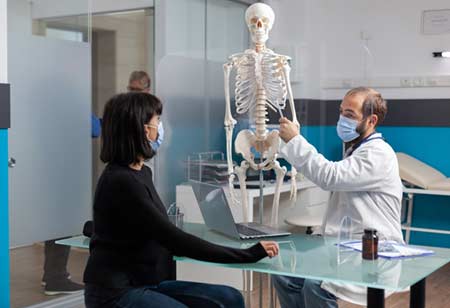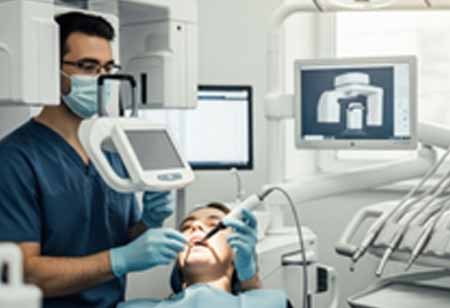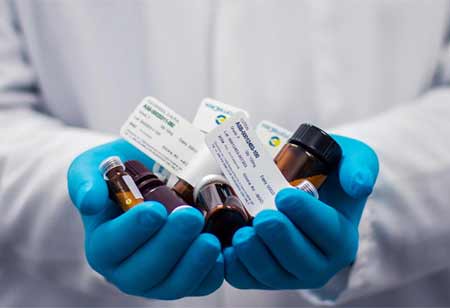Regenerative Medicine: Revolutionizing Orthopedic Healing
Orthopedic regenerative medicine centers offer advanced, minimally invasive treatments that enhance healing, reduce recovery time, and improve patient outcomes.

By
Medical Care Review | Friday, November 21, 2025
Stay on top of your health and well-being with exclusive feature stories on the top medical clinics and treatment centers, expert insights and the latest news delivered straight to your inbox. Subscribe today.
The field of orthopedics is undergoing a significant transformation, driven by the emergence of regenerative medicine as a promising solution to musculoskeletal injuries and degenerative conditions. For years, patients seeking relief from joint pain, tendon injuries, or cartilage damage have been limited to traditional treatment options such as surgery and physical therapy. However, the rise of regenerative medicine is opening new doors to treatments that not only alleviate symptoms but also promote the healing and regeneration of damaged tissues. As demand for less invasive, more effective treatments continues to grow, orthopedic regenerative medicine centers are becoming increasingly essential for providing cutting-edge care worldwide.
Advancements in Regenerative Medicine for Orthopedic Care
Regenerative medicine aims to replace or repair damaged tissues by harnessing the body's natural healing processes. This method uses biologic therapies, such as growth factors, platelet-rich plasma (PRP), and stem cells, in orthopedics to promote tissue regeneration and healing. Instead of treating only the symptoms, these treatments aim to address the underlying causes of musculoskeletal disorders and injuries. Orthopedic specialists' treatment approaches are changing as regenerative medicine enables faster recovery, reduced pain, and improved long-term outcomes.
To promote healing of injured joints or tissues, stem cells are extracted from a patient's bone marrow or adipose tissue as part of stem cell treatment, a well-established regenerative medicine technique in orthopedics. These stem cells are helpful for healing injuries and diseases such as osteoarthritis and tendon tears because they can develop into diverse tissues, including cartilage, bone, and muscle. Furthermore, PRP (Platelet-Rich Plasma) therapy has become well-known for its ability to promote healing by using a concentrated version of a patient's blood, rich in growth factors that support tissue regeneration and repair. PRP therapy offers a non-surgical alternative for treating chronic pain and regaining function, and it has shown excellent results for tendon injuries, ligament sprains, and cartilage deterioration.
Minimally Invasive Treatments for Improved Patient Outcomes
Regenerative medicine is less invasive than standard orthopedic procedures, which involve significant risks and recovery times. Treatments like PRP therapy and stem cell injections can be administered with straightforward outpatient injections, allowing patients to return to busy lifestyles and speed up their recovery. Regenerative therapies have grown in popularity, particularly among those with age-related joint issues or sports injuries, because they are less painful and recover faster than standard operations.
Regenerative therapies are highly adaptable, as they can be tailored to each patient's unique needs. Orthopedic regenerative medicine institutes can develop individualized treatment programs tailored to a patient's age, condition, and overall health to treat a hip labral tear, knee osteoarthritis, or a torn rotator cuff. Thanks to this degree of customized care, every patient is guaranteed to receive the most suitable and efficient treatment for their unique requirements.
The Growing Demand for Regenerative Medicine Centers
Specialized orthopedic regenerative medicine institutes are becoming increasingly in demand as regenerative medicine continues to gain popularity. Patients are actively seeking physicians who offer these cutting-edge treatments as they become more aware of their benefits. In addition to providing the most up-to-date biologic treatments, these facilities have staff skilled in treating complex musculoskeletal disorders and helping patients recover.
Advancements in technology are also driving the expansion of regenerative medicine centers, making these treatments more accessible and practical. New developments in imaging and diagnostic tools enable more precise delivery of stem cells or PRP, thereby improving the success rates of these treatments. In addition, as the regulatory environment for regenerative medicine becomes more defined, patients and healthcare providers can expect increased confidence in the safety and efficacy of these therapies.
The expansion of orthopedic regenerative medicine facilities offers a substantial opportunity for investors and healthcare entrepreneurs. These facilities offer a profitable business strategy, driven by rising patient demand and the potential for high patient retention. However, developing a thriving center for regenerative medicine necessitates a substantial investment in both experience and technology. To stay competitive in this ever-changing field, practitioners need to stay up to date on the latest scientific findings, regulatory changes, and therapeutic approaches.
The future of orthopedic regenerative medicine appears promising. Researchers and clinicians continue to explore new ways to enhance the effectiveness of stem cell and PRP therapies, including combining these treatments with other technologies such as gene therapy or tissue engineering. Additionally, advances in biomaterials and scaffolding could improve tissue regeneration, allowing for even more effective treatments for joint replacements and cartilage repair.
These treatments will likely become a common choice in orthopedic care as they advance, upending conventional surgical methods and establishing a more comprehensive, patient-centered therapy paradigm. The regenerative medicine industry is expected to continue expanding as demand for noninvasive, efficient treatments for musculoskeletal pain and injury grows. This will present patients and healthcare professionals with new opportunities for healing and rehabilitation.







